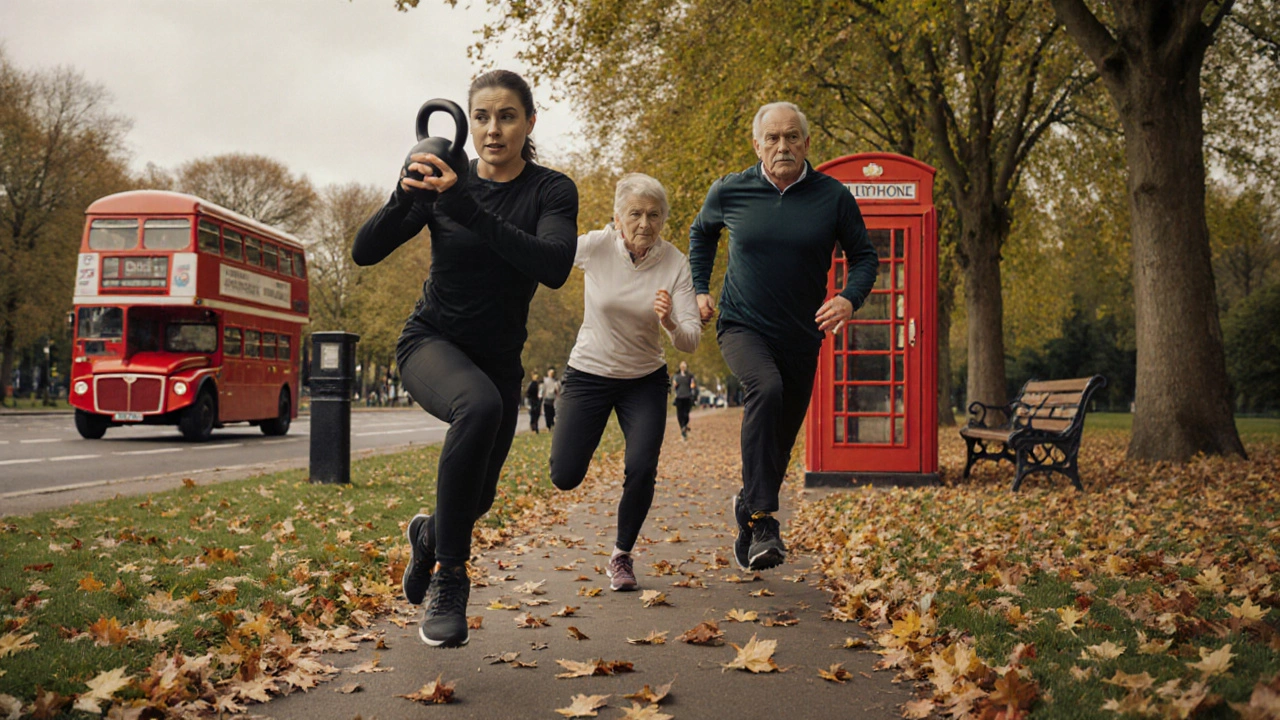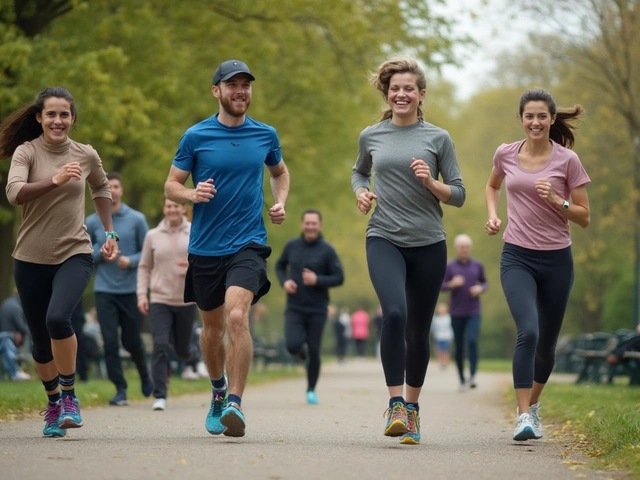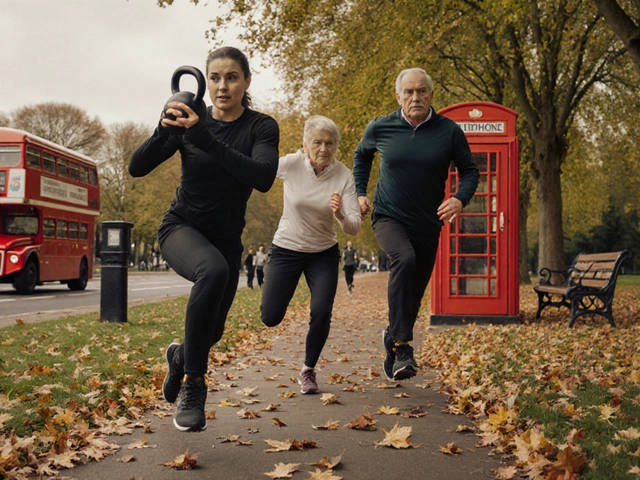Fitness Goal Tracker
Fitness is a holistic practice that blends physical activity, proper nutrition, recovery, and mindset to improve health and performance. It isn’t a single activity but a lifestyle framework that anyone can adopt with the right plan.
Understanding the Core Pillars
To become good at fitness, you need to master four interconnected pillars: Exercise, Nutrition, Recovery, and Motivation. Each pillar supports the others; neglect one and progress stalls.
Designing an Effective Exercise Routine
Exercise is the physical stimulus that drives adaptation. A balanced routine typically includes three modalities:
- Strength training - builds muscle, increases bone density, and boosts metabolism.
- Cardiovascular training - improves heart‑lung efficiency and supports fat loss.
- Mobility / Flexibility work - enhances range of motion, reduces injury risk, and aids recovery.
Start with a simple 3‑day split: Day1 - upper‑body strength, Day2 - cardio + mobility, Day3 - lower‑body strength. Progress by adding sets, increasing load, or extending cardio duration every 2‑3 weeks.
Nutrition: Fueling the Body Right
Nutrition supplies the energy and building blocks needed for training and repair. Key concepts:
- Macronutrient balance: Aim for 1.6‑2.2g protein/kg bodyweight, 20‑35% of calories from fat, and the rest from carbohydrates.
- Timing: Consume a protein‑rich snack (20‑30g) within 45minutes post‑workout to jump‑start muscle synthesis.
- Micronutrients: Calcium, vitaminD, magnesium, and potassium support muscle contraction and bone health.
Track intake using a free app for a week; you’ll spot gaps you can fill with whole foods like lean meat, beans, nuts, and leafy greens.
Recovery: The Underrated Advantage
Without proper Recovery, training gains are erased by fatigue and injury. Recovery breaks down into three actionable parts:
- Sleep - 7‑9hours of quality sleep each night restores hormone balance and muscle repair.
- Active rest - light walks, yoga, or foam‑rolling to promote circulation.
- Hydration - at least 2.5L of water daily; electrolytes become crucial after intense sweat sessions.
Use a sleep‑tracking wearable for a month; aim to keep the deep‑sleep percentage above 20% for optimal recovery.
Goal Setting and Progress Tracking
Clear Goal setting translates vague desires into measurable actions. Follow the SMART framework (Specific, Measurable, Achievable, Relevant, Time‑bound). Example: “Increase squat weight by 20kg in 12weeks.”
Pair goals with a Progress tracking system. Use a spreadsheet or a dedicated app to log:
- Exercise metrics (weight, reps, distance).
- Body measurements (waist, hips, body‑fat %).
- Nutrition stats (calorie intake, protein grams).
- Sleep quality scores.
Review the data weekly; trends will reveal what’s working and where to tweak.
Motivation: The Engine That Keeps You Moving
Even the best plan collapses without a steady Motivation supply. Strategies that actually work:
- Public commitment - share your goal on social media or with a friend.
- Micro‑rewards - treat yourself to a new playlist or a massage after hitting a milestone.
- Variety - rotate exercises, try a new class, or switch scenery every few weeks.
- Education - read a short article (like this one) weekly to keep the ‘why’ fresh.
Combine these tactics with a habit‑stacking approach: attach your workout to an existing habit (e.g., after morning coffee).
Comparing Training Modalities
| Modality | Primary Benefit | Typical Session Length | Ideal Frequency (per week) |
|---|---|---|---|
| Strength Training | Muscle hypertrophy & strength gains | 45‑60min | 3‑4 |
| Cardiovascular Training | Improved aerobic capacity & fat oxidation | 30‑45min | 3‑5 |
| Mobility / Flexibility | Enhanced range of motion & injury prevention | 15‑20min | Daily or post‑workout |
Pick the modality that aligns with your current goal. If your aim is weight loss, prioritize cardio; for strength, focus on lifting; for longevity, blend all three.
Putting It All Together: A 4‑Week Action Plan
Below is a sample 4‑week roadmap that stitches every pillar into a coherent program. Adjust the weight, distance, or reps based on your baseline.
- Week1 - Foundation
- Exercise: 3‑day full‑body strength (2 sets x 8‑10 reps), 2 cardio sessions (20‑min brisk walk).
- Nutrition: Log all meals; aim for 0.8g protein/kg bodyweight.
- Recovery: Set sleep alarm for 8hrs; hydrate 2L water daily.
- Goal: Write a SMART goal and record baseline measurements.
- Week2 - Progression
- Exercise: Add a third set to strength moves; increase cardio to 30min.
- Nutrition: Boost protein to 1.2g/kg and add a post‑workout snack.
- Recovery: Introduce 10‑min foam‑rolling after each session.
- Motivation: Share week‑1 results with a friend.
- Week3 - Intensity
- Exercise: Start a 5‑x‑5 strength protocol (5 sets of 5 reps heavy).
- Nutrition: Track micronutrients; ensure ≥1000mg calcium.
- Recovery: Add a 20‑min yoga flow on rest days.
- Tracking: Review performance graph; note any plateaus.
- Week4 - Evaluation
- Exercise: Test max reps at previous weights; record new PRs.
- Nutrition: Compare week‑1 vs week‑4 macro ratios.
- Recovery: Record sleep quality; aim for >20% deep sleep.
- Goal: Assess if original SMART goal is met; set the next milestone.
Follow this template for three cycles (12weeks) and you’ll see measurable improvements in strength, endurance, and body composition.
Common Pitfalls and How to Avoid Them
Even seasoned enthusiasts stumble. Here are the top three and quick fixes:
- Skipping recovery - Treat rest days as training days for tissue repair. Schedule a dedicated “recovery block” each week.
- Over‑emphasizing cardio - If you prioritize cardio at the expense of strength, you risk muscle loss. Keep at least two strength sessions weekly.
- Vague goals - “Get fit” is a feeling, not a metric. Convert it into concrete numbers (e.g., run 5km in under 30min).
Adjust on the fly; the system is flexible, not rigid.

Frequently Asked Questions
How many days per week should I train to see results?
For most adults, 3‑5 sessions combining strength and cardio give consistent gains. Beginners can start with three days and add a fourth as fitness improves.
Do I need supplements to be good at fitness?
Supplements are optional. Whole foods provide most nutrients. If you struggle to meet protein targets, a whey or plant‑based powder helps, but it’s not a requirement.
What’s the best way to stay motivated long‑term?
Tie workouts to a habit you already enjoy (e.g., listening to podcasts). Celebrate small wins publicly and rotate activities every few weeks to keep things fresh.
How important is sleep compared to diet?
Sleep and diet are equally critical. Poor sleep spikes cortisol, which hinders muscle repair and fuels cravings, negating a clean diet.
Can I get fit without a gym?
Absolutely. Bodyweight circuits, resistance bands, and outdoor cardio (running, cycling) substitute for most equipment. Focus on progressive overload by increasing reps, tempo, or load via backpacks.








